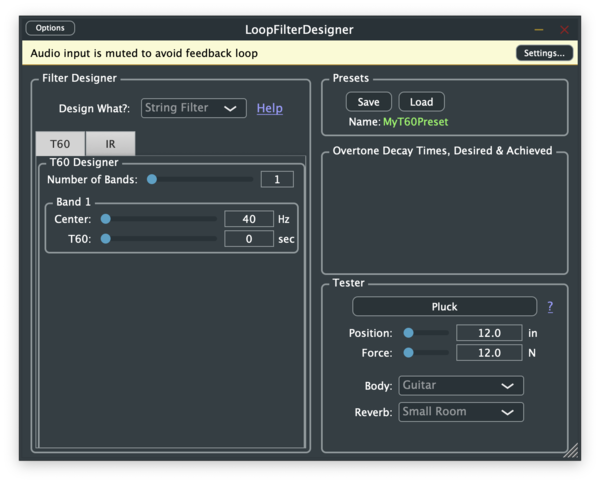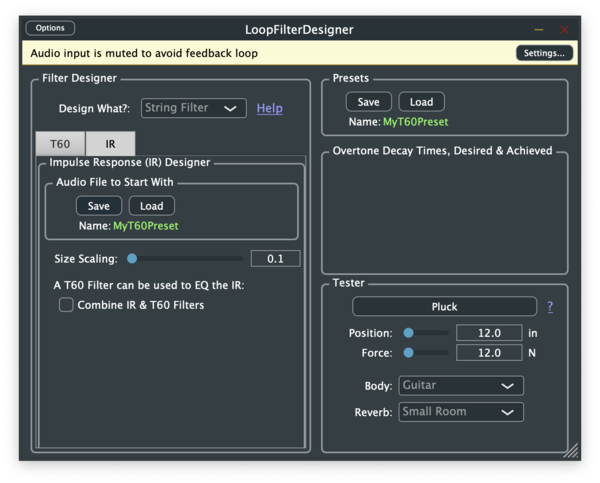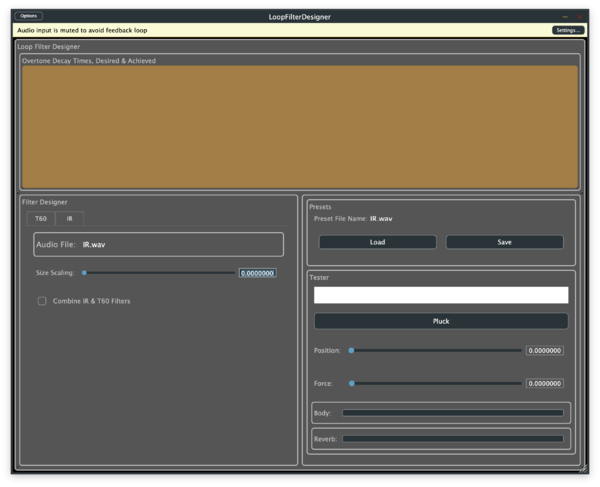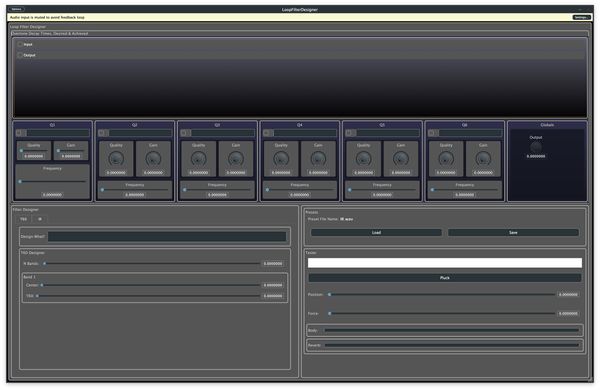Difference between revisions of "Project-jos-320c-2021"
From CCRMA Wiki
m (→GUI Prototype) |
m (→Update 2021-05-29) |
||
| Line 45: | Line 45: | ||
* Pulled in the PGM EqualizerExample GUI as the starting point for my editable T60 GUI Plot: | * Pulled in the PGM EqualizerExample GUI as the starting point for my editable T60 GUI Plot: | ||
[[file:pgmxmlhack.jpg|600px]] | [[file:pgmxmlhack.jpg|600px]] | ||
| − | * In Emacs, changed `parameter="string"' to ` | + | * In Emacs, changed `parameter="string"' to `<!-- parameter="string"-->' in the .xml for now, so it will load without errors |
* Getting into the .xml showed me differences that led to working class-editing! | * Getting into the .xml showed me differences that led to working class-editing! | ||
| − | * Apparently it is necessary to define some number of Nodes before Classes will work. | + | ** Apparently it is necessary to define some number of Nodes before Classes will work. |
| − | * (I copied the Node definitions from EqualizerExample/Resources/magic.xml into my .xml) | + | ** (I copied the Node definitions from EqualizerExample/Resources/magic.xml into my .xml) |
== Project Source == | == Project Source == | ||
Revision as of 22:31, 29 May 2021
Contents
JOS 320C Project
Goals
- Make my first "meta plugin" that writes out files for other plugins to read
- Learn how to make better GUIs for plugin Editors
Plan
- Look at some 220C projects for general orientation on project reporting
- Read ahead in the course schedule to learn about GUI options
- Decide on a file format: XML? Plain text? Encrypted?
- I am starting with plain text, and planning to include a hash string generated by a secret algorithm to detect modification if/when needed
- I am now reading all GUI-related JUCE tutorials that are new since I last looked
GUI Prototype
- JUCE GUI Editor used (very quick)
- Band-setting sliders will be programmatically laid out dynamically
- Later planning to draw the T60 curve directly, like many EQ interfaces these days
- Configured for waveguide string loop filter
- Can also be used to design late reverb
Update 2021-05-06
- Changed name T60Designer to LoopFilterDesigner
- Letting go of Reverb case for now (planning a separate plugin)
- Created LoopFilterDesignerGUI from T60DesignerGUI and added a Tabbed Component
- Moved T60DesignerGUI to Tab 1
- Created a new IRDesignerGUI for Tab 2
- Revised GUI prototype with Tab 1 and 2 selected, respectively:
Update 2021-05-08
- Started prototyping the GUI again, this time in PGM
- PGM a little harder to work with at this point, but run-time editing is huge, and XML GUI description much better
Update 2021-05-16
- Remade GUI in PGM and changed its layout a bit:
- The reason for making the plot more prominent is to facilitate direct manipulation, as in the EqualizerExample
- Now there is no need to show all the band design parameters (which requires programmatic layout)
- Due to bug(s), I cannot create Classes in PGM (for editing groups of widgets all at once)
- I am suspending efforts on GUI development and moving to implementations under the hood
- I reported the bugs and may eventually work to debug PGM in order to resume GUI development
Update 2021-05-29
- Discovered that it is super easy to edit the .xml of a PGM GUI - faster than using PGM itself!
- Pulled in the PGM EqualizerExample GUI as the starting point for my editable T60 GUI Plot:
- In Emacs, changed `parameter="string"' to `<!-- parameter="string"-->' in the .xml for now, so it will load without errors
- Getting into the .xml showed me differences that led to working class-editing!
- Apparently it is necessary to define some number of Nodes before Classes will work.
- (I copied the Node definitions from EqualizerExample/Resources/magic.xml into my .xml)
Project Source
See the jos directory of the 320C-2021 GitLab project which can be cloned as follows:
git clone git@cm-gitlab.stanford.edu:jos/320C-2021.git
T60 Designer Help
- T60 Designer is an audio plugin that designs, tests, and exports digital filters to other compatible audio plugins.
- The filter design is specified as the desired decay-time in each frequency band.
- Decay time is specified by T60, which means "time in seconds to decay by 60 dB" (a term commonly used when studying reverberation).
- Presently two filter types can be specified:
- String Filter (loop filter used in a digital waveguide string model)
- Late Reverberator (feedback filter used to simulate air absorption in an acoustic wave propagation model)
Test Pluck Help
When T60 Designer is configured to design a "String Filter", then the "Tester" panel in the lower-right corner provides a Pluck button for hearing the sound of a plucked waveguide string using the loop-filter designed by T60 Designer. When you like what you hear, you can Save it out as a Preset that any compatible plugin can use.
Audio Plugin Development Workflow Summary
- Throw together a first GUI using the JUCE GUI Editor (design step)
- Implement the plugin
- Recreate the GUI using Plugin GUI Magic
- Develop final image assets for a professional GUI appearance and drop them in



